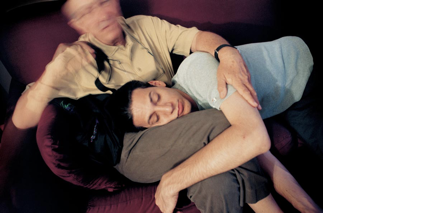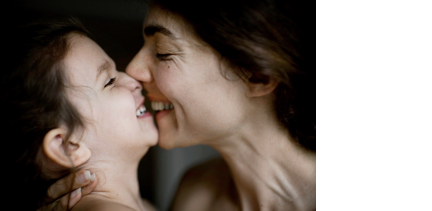Text




















I like to " let’s life be beautiful like summer flowers." However, since I turned twenty, my time seems to have been pushed on the fast forward button and I am left racing against time. Photographing is the only way to record my love for the world in the shortest amount of time. I relish the meager but satisfying happiness that life has given me, so my subjects come from my life and nature. I love capturing the sunshine that slips into my home, the vibrant nature, and the calm and restful life of my family. One of my favorite things to photograph is the connection between my body and nature, because being in touch with nature always makes me happy. When I try to find my connection with nature, I ask trees, grass and flowers. And I always find my connection to nature, which gives me a sense of belonging. I always want to show my love for my life in these images. I love the sun, snowflakes, and my family. Everyone has them. Yet, whenever I see them. I always want to tell to everyone how lucky I am. These photos are the praise song for my life.
Tingting Xiao-Final Portfolio (5/14/21)
0 notes
Text
My mother and I laughing, 2000

Eran and His Father, 2000

Love, 2009

Father and Son,2010

Elinor Carucci: Closer and Mother Elinor Carucci is an Israeli American Fine Art Photographer. Her personal works usually about family, motherhood, and relationship. In her images, her parents, children, and spouse are the main character. Her works catch people’s eyes because the color of her photography is vivid with little grain and the atmosphere is more loving. The following is a discussion of two bodies of her work - Closer and Mother. Carucci’s Closer taken on her birthplace, Jerusalem during 1993 to 2003. The inspiration for this project came from her mother, so Carucci focused on showing her close family relationships. While the series describe depend relative, it also touches on the moments during her daily life such as kissing, touching, and hugging. In My Mother and I Laughing (2000), Carucci and her mother sit on the bed; she only wears a suit of underclothes, and her mother only has a loose white T-shirt. They wear very comfortable clothes in a private place. In addition, her mother looked at the camera, and then Carucci lowered his head and laughed. It seems like that they have a chat with the viewer. In. the title, Eran and His Father, (2000), Carussi’s husband, Eran, who falls asleep on his father’s ham and hug the lag. And then, Eran’s father places one hand on Eran’s body. Elinor Carucci’s Mother series starts with her pregnant (2004) and finish at her children are 8 years old (2012) in New York City. As with her previous series, Closer show the relationship between family, Mother series also shows an amount of intimacy with her daily life. However, this time she has a new identity, a mother. She uses the camera to record every emotion in her motherhood including she hugs, holds, and kisses. Her actions become stronger. In a TIME, article “The Most Intimate Dance: Elinor Carucci's Photos of Motherhood” by Susan Bright, the author states that “The little-discussed eroticism that so often exists between mother and child is played out honestly and easily – a beautiful, fluid link between generations”. In the Love, (2009), she and her daughter laugh and close to each other. They have the same smile face; her daughter looks like a girl who she used to be. In the same way, Father and Son, (2010) is also a sweet photo. Carucci’s husband falls asleep with their son; the father hugs his son with peace, and the son might just wake up. Superficially, to fix the issue, there are many similarities between Closer and Mother. First and foremost, all of them are portrait photography. Carucci aims to capture the personality and mood. Moreover, they are photography in a narrative style. Carucci records the daily life of her family. More than that, both of them have the same theme that intimacy in a family. In the Closer series, it describes the relationship between mother and daughter, father and son. It is the same as Mother series. The main subject in these four images is parents and children. They caught my eye immediately because the children, who in the Closer series become parents in the Mother series. It makes me marvel at time and change. When I look at these photos, I think of my future. What does it look like? In order to show their intimacy, their distance is so close as they are hugging and kissing. Both are placed indoors, so their atmosphere is more relaxed and peaceful. The biggest difference between Closer and Mother is that they are different light. As an interview by Mark Alice Durant, Carucci states that “I use available light in Jerusalem…Israel’s sun is stronger and there is a lot of light everywhere.” In the My mother and I laughing, (2000) and Eran and His Father, (2000) the light is sunlight, so the tone of this series photos is so warm. But, in the Mother series, Carucci does not use warm light. To compare these two series, the tone of Mother is cooler than Closer. Also, they have different methods of working in the images. In the Eran and His Father, (2000) Carucci uses motion blur photography; the arm of Eran’s father is blurry. This method makes the picture more like real life. Both of the My Mother and I Laughing, (2000) and Eran and His Father, (2000) close the distance between the project and viewers because the characters look at the camera, audiences will feel like “come into” the photo; the characters are talking to the viewers. However, the Love, (2009) and Father and Son, (2010) do not allow audiences “come in”; they might just think that this family is loving.
cited works Durant, Mark Alice. “Elinor Carucci.” Saint Lucy RSS, saint-lucy.com/conversations/elinor-carucci/. Bright, Susan. “The Most Intimate Dance: Elinor Carucci's Photos of Motherhood.” Time, Time, 30 Sept. 2013, time.com/3802764/the-most-intimate-dance-elinor-caruccis-photos-of-motherhood/. CARUCCI, ELINOR. “ELINOR CARUCCI.” Closer, www.elinorcarucci.com/closer.php#0. CARUCCI, ELINOR. “ELINOR CARUCCI.” Mother, www.elinorcarucci.com/mother.php#0.
3 notes
·
View notes
Text










In this documentary project, I capture my family's daily life because I hope people understand more about my life, which is a Asian life. There are too many Asian hate crimes over the past week, I expect my photos bring more information to other. They can know what our belief, culture, and the relationship between family. People have different skin and different race, but we have same experience. My grandma worships our deities. My grandpa often read the newspaper when he has lunch. My family like to chat after dinner, we talk about our day, news, or past events. And I believed that it might be someone's life. Do your grandparents have their belief? Does your dad have wine in the dinner? Is your brother cute only at the sleeping? We are different, but we also are same.
03/26/2021
0 notes
Photo


Gordon Parks’s exhibition “Half and the Whole” is placed at the Jack Shainman Gallery on 524 W 24th St, New York, NY. Gordon Parks was an American photographer, he focused on civil right, poverty, and race relations. For that reason, there are fifty-four photograph span from 1942-1970, with different dimensions, in his exhibition that documents many of the important conditions of African American. He captured many African American in his work including the protest march and their daily life. His work along the lines of a short story, it tells the audience a different life. “Boy with June Bug” caught my eye when I run through the gallery. I pick the photo of the boy lies down on the meadow with June bug because it allow me recall my childhood, my friends and I run in the field and catch frogs in hot summer. The grass is a front ground. The boy lies down on the meadow, his eyes are close, one hand hold a string that tie a June bug. He is calm and enjoy his sunshine. The color of this photo is muted. When I look at this picture, I want to wake him up, and play with him, ask him where he caught the June bug. Another photo I choose is “Doll Test”, an adult shows two dolls that one doll has white skin, another is black, to an African American boy. However, the little boy pays attention on the white doll. This photograph makes me recall Deborah Willis’s article, “Picturing Us”. In the article, the author discussed that the relationship between race and identity. Willis chooses a black doll for her Christmas present because her parents and teachers lead her to be proud of her race. Unfortunately, most of children are not as lucky as Willis, no one to tell them be proud of their race. Gordon Parks’s photography is telling us a story what did African American’s life look like. Parks seems like our eyes; we see what he saw. These photos bring us to that time period, we are not only seeing the race issue, but also African American’s life in that society. I believe that Parks hope people can remember this story in his photography. The exhibition’s relevance to us today is that the history should not be forgot. When we remember the past, we might not do again in the future.
03/05/2021
1 note
·
View note
Text

Date: February 5 2021
Time: 5:10pm
Place: bedroom
Technical Information: ISO400 f/2.0 1/916

Date : February 6 2021
Time: 11:40am
Place: kitchen
technical Information: ISO618 f/2.0 1/17

Date: February 24 2021
Time: 2:16pm
Place: bathroom
technical Information: IOS100 f/2.0 1/948

Date: February 12 2021
Time: 12:57pm
Place: bedroom
technical Information: ISO400 f/2.0 1/7

Date: February 23 2021
Time: 2:02pm
Place: bedroom
Technical Information: ISO 100 f/2.0 1/904

Date: February 16 2021
Time:12:39
Place: bedroom
Technical Information: ISO400 f/2.0 1/350

Date: February 10 2021
Time: 12:52
Place: bedroom
Technical Information: ISO400 f/2.0 1/60

Date: February 21 2021
Time: 1:48pm
Place: bedroom
Technical Information: ISO 400 f/2.0 1/15
02/26/2021
0 notes
Photo

“ I was fortunate because at home and at school racial pride taught.” (Deborah Willis)
In Deborah Willis’s article, she discusses that the relationship between her race and identity in page 4. I pick this image because it reflects Willis’s opinion. Willis chooses a black doll for her Christmas present because her parents and teachers lead her to be proud of her race. Children do not know which doll is a nice color without adults teach them. Before adult suggested children what race is, they know nothing. In this picture, these two boys do not feel anything about their skin, I can know theirs feeling from the body language and facial expressions. They are happy in a sunny day. Child is a piece of clean paper, but adults are bad painter. Some pictures also show that we should not have racism, but I thought that have too many affectation. I thought that this image might be what the world looks like before human know about race
Source: https://twitter.com/_SJPeace_/status/1084312338939940865
02/19/2021
1 note
·
View note
Text
photo 1: Dana ScruggsBrooklyn, N.Y. New York Time
Dana Scruggs's photograph exhibits her life during the quarantine. She lost the motivator for life. We can see her feeling from the light of the photograph. Scruggs is under the light but the half of photo is in the dark. Her pose looks like a lazy cat and think about something that does not make her happy. I believed that many people have same feeling during the quarantine because I was the one of them. This feeling made me crazy and wasted my time. So, I tried to do something to get out of the feeling. When I pay more attention on the life, I discover that some interesting things. For example, a bird always waked me up so early in the summer. I planned to find its nest and waked it up early early but it leaved before I found its nest. I thought that we can break away from a unmotivated life if we accept the change in our lives. That's why I grow snow in the snow day. We should enjoy the life even if it is not good.
Self- Portrait Diptych (2/5/21)


2 notes
·
View notes